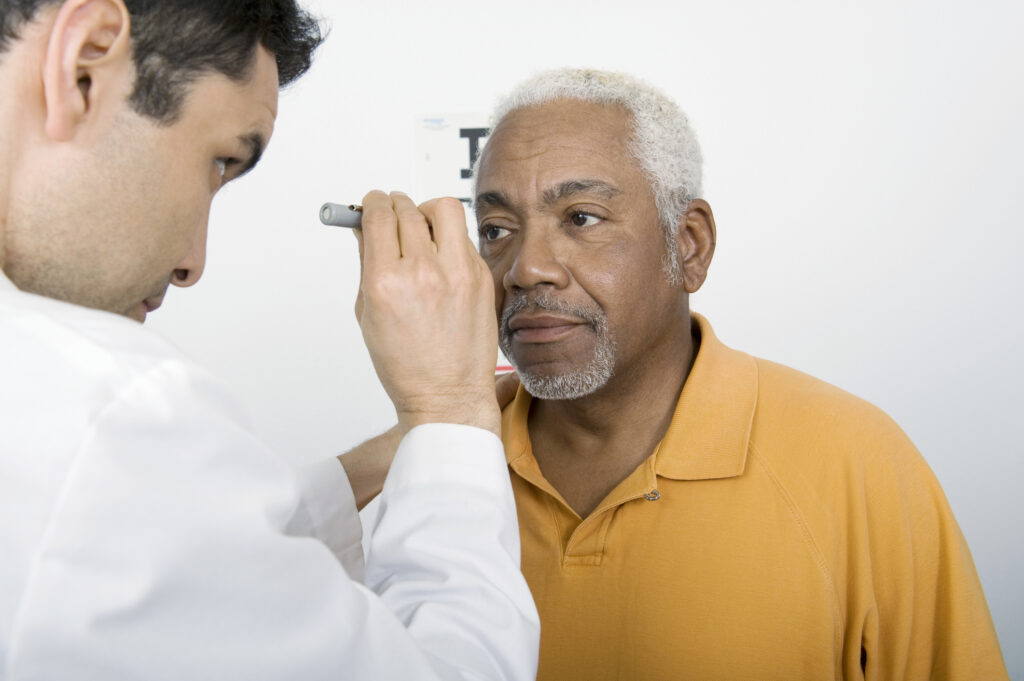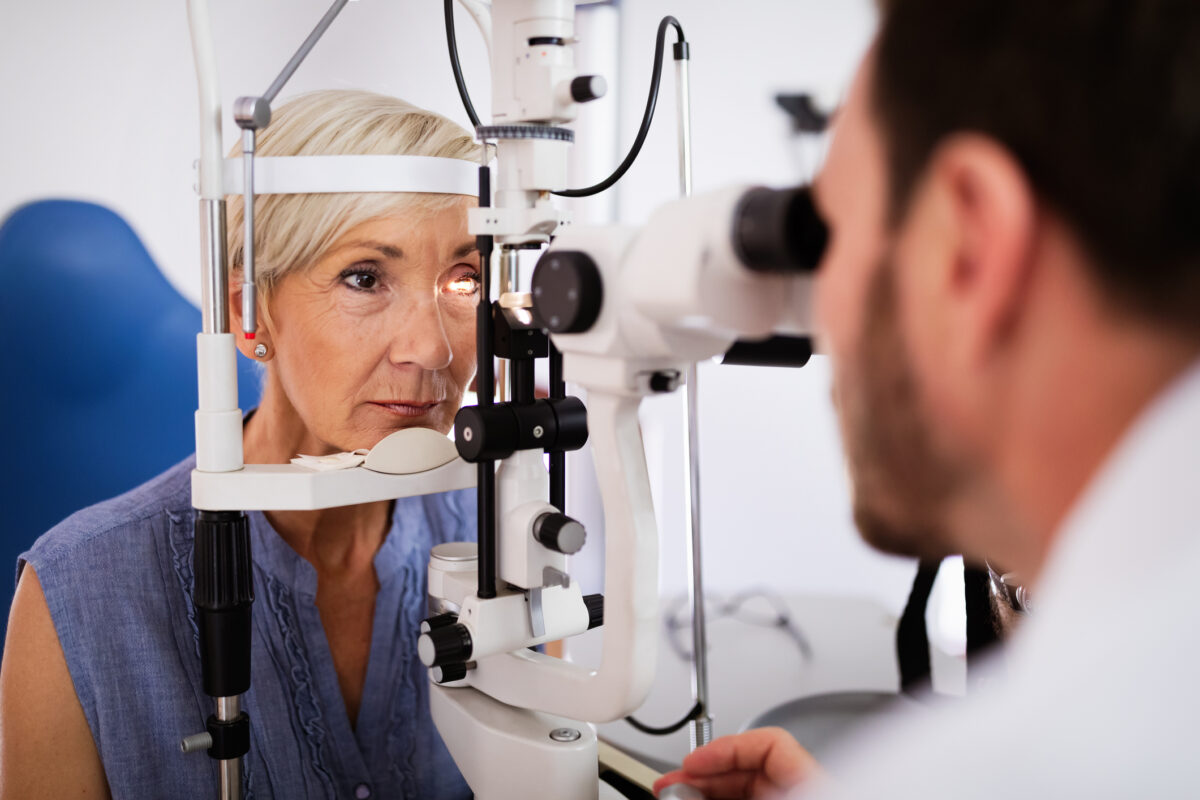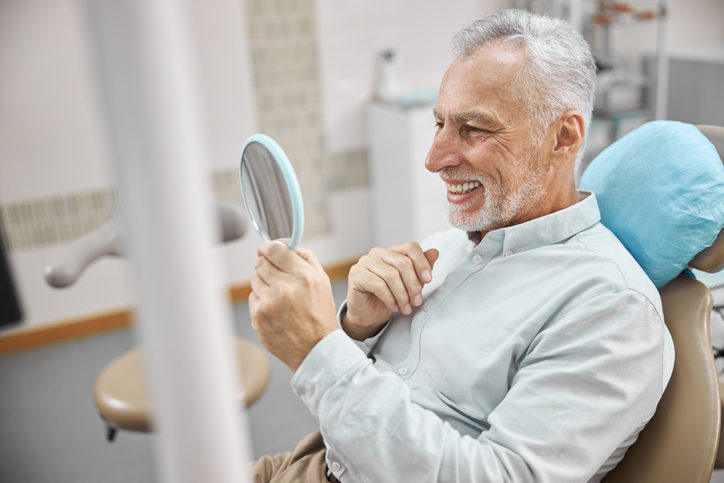While it is true that young and middle-aged adults are at low risk for eye disease or impairment, that doesn’t give them a free pass to skip routine eye care maintenance and protection. Just like staying out of the sun reduces your chances of getting skin cancer, and eating healthy reduces your risk of heart problems in the future, it is essential to practice good eye care now, just as it will be in 5, 10 or 15 years. After all, physical health is a lifetime job!
“It’s important to understand that your eyes don’t work independently to your body; that means chronic diseases play a major role in ocular health and eyesight when you’re older. We always emphasize a healthy lifestyle, diet, and exercise to stave off those chronic illnesses to preserve your vision for a long time.
Also, it’s important to take steps to protect your eyes from physical trauma, which can happen at any age,” says Zubair Ansari, MD, Assistant Professor, Cataract, Comprehensive, and Global Ophthalmology at the Bascom Palmer Eye Institute at the University of Miami.
The following simple and easy preventive eye care measures should help keep your vision sharp for years to come.
At Work and Play

Avoid Digital Eye Strain
If you spend a lot of time on the computer or your smartphone, or do a lot of near-vision work, you run the risk of eye strain. Dr. Ansari recommends the 20-20-20: Every 20 minutes, look at an object that’s 20 feet away for 20 seconds to give your eye muscles a chance to relax.
You are usually not as close to the screen when you are watching television, but Dr. Ansari says it’s still a good idea to close your eyes and rest them every half-hour. “When people watch TV, their blink reflex actually goes down, so their eyes tend to dry out,” he cautions.
Wear Safety Goggles
According to the National Institute for Occupational Safety and Health, around 2,000 American workers sustain job-related eye injuries every day. Your glasses and contacts will not protect you from shards or hard impact. If anything, the glasses may break, harming your eyes even more.
The American Academy of Ophthalmology (AAO) recommends that you wear protective eyewear with “ANSI Z87.1” marked on the lens or frame — that means it meets the American National Standards Institute Z87.1 safety standard — when you are working around hazardous chemicals and flying debris. The Occupational Safety and Health Administration (OSHA) has determined what protection is appropriate for certain jobs, so check with human resources for standard recommendations on face shields, welding glasses, and more.
Wear Sunglasses
Prolonged exposure to solar ultraviolet radiation (UVR) can lead to cataracts (clouding of the lens), macular degeneration (loss of central vision), and pterygium (tissue growth on the eyeball). To avoid that, the AAO says to wear sunglasses marked 100% UV resistant and are oversized to protect more area. A study published in the British Journal of Cancer reported that sunglasses that screen out UVR rays may also reduce the risk of melanoma of the eyes.
Wear Face Guards and Other Sports Protection
If you are playing sports, wear recommended sports-specific face guards, goggles, visors, and other eye protection. If you are giving presents such as paint guns, air guns, or sports equipment to young adults or children, make sure you also give the appropriate eye protection with polycarbonate lenses. Don’t give young children toys with sharp, projectile protrusions.
At Home

Take Out Contact Lenses Before Sleeping
According to the Centers for Disease Control and Prevention, around one-third of contact lens wearers admit to sleeping or napping with their lenses in. However, doing this puts you at six to eight times higher risk for eye infections, which can lead to corneal damage, and rarely, loss of vision.
“I see a lot of patients in our emergency room with corneal ulcers and infections as a result of folks sleeping in their contact lenses. Even if it’s a short nap, I highly advise to remove the contact lenses and safely put them into clean solution first, if possible,” says Dr. Ansari. He also cautions against wearing contacts on long plane flights. The dry, arid air environment causes the lens to stick to the eye. When the lens is removed, it causes the skin of the eye to be removed, which can lead to infections.
Avoid Sharing Eye Makeup or Drops
Never share anything that touches the eyes’ mucosal membranes. This can lead to the transmission of bacterial infections. Also, throw out expired solution or drops. They probably won’t harm your eyes, but they will be ineffective.
Forget Eyelash Extensions
They may look pretty, but they can bring a host of problems, such as allergic reactions, corneal abrasions, infections, inflammation, and loss of natural lashes. If you absolutely must have that butterfly look, don’t do it yourself — go to a trained professional, says Dr. Ansari. Make sure the professional is certified and practices good hygiene.
Prevention Is Key

Get Regular Eye Exams
Regular and complete eye exams are an important part of practicing good eye care and maintaining eye health. The AAO recommends that adults aged 40 and up get a complete eye exam. After an exam, your ophthalmologist can recommend how often you should return to get your eyes checked.
Exceptions
- If you have diabetes, high blood pressure, or a family history of eye disease, get a complete screen now. Your ophthalmologist or optometrist can then recommend how often you should be seen.
- If you wear contact lenses or glasses, get a yearly exam to make sure your prescription is still correct.
Eye exams are especially important as you age since your risk for eye disease increases as you get older. If you’re 65 or older, the AAO recommends you go for an eye exam every year or two. During these appointments, your ophthalmologist will check for symptoms of age-related eye diseases. Seek help immediately if you have an eye infection, inflammation, or trauma.
Know your risk history. Certain conditions put you at higher chances of developing certain eye diseases. Discuss preventive care with your ophthalmologist if you:
- Are overweight or obese
- Have a family history of eye disease
- Are African American, Hispanic, or Native American
Manage Your Diabetes
People with Type 1 and Type 2 diabetes are at bigger risk for eye problems, including glaucoma (damage to the optic nerve caused by high eye pressure), cataracts (clouding of the lens), retinopathy (damage to the blood vessels in the retina), and blindness, says the American Diabetic Association.
Make sure to follow your diabetes protocol, and check in regularly with your doctor, especially if you develop a major vision problem. With good management, your eyesight issues should remain minor.
Control Blood Pressure
High blood pressure is not just bad for your heart; it can also damage your vision. It may lead to hypertensive retinopathy (blood vessel damage that blurs vision or causes blindness), choroidopathy (build-up of fluid under the retina that can distort or impair vision), or optic neuropathy (blood flow blockage that can kill nerve cells and cause vision loss), says the American Heart Association. These results of uncontrolled hypertension may not show up for years, which is all the more reason to stop the build-up by managing it now.
Eat Eye-Healthy Foods
The AAO recommends a low-fat diet that includes lots of fruits and veggies. You want a diet that is specifically rich in the following:
- Vitamins A, C, and E
- The antioxidants lutein and zeaxanthin (leafy green vegetables)
- Omega IIIs (cold-water fish such as salmon)
- The mineral zinc (beans)
Dr. Ansari reports that taking AREDS vitamins, marketed to help with macular degeneration, have been proved to slow the progression in people who already have the disease but have no effect in people who don’t. It has not been shown to be preventive.
Quit Smoking
You know smoking can lead to heart disease and lung cancer. But are you aware that it can also cause vision loss?
According to the New York State Department of Health, smokers are more likely than nonsmokers to develop:
- Age-related macular degeneration — Three to four times greater risk.
- Cataracts — Three times the risk if you are smoking more than 15 cigarettes a day.
- Glaucoma — There is a proven link between smoking and high blood pressure, cataracts and diabetes, all of which heighten the risk of glaucoma.
- Diabetic retinopathy — Smoking can increase your risk of developing diabetes and makes managing it more difficult.
- Dry eye syndrome, inadequate eye lubrication — More than twice as likely to affect smokers.
Need help in quitting smoking? Check out Smokefree.gov.
Get Active
Exercise can improve your heart health, mental health, and keep weight down. Did you know it can also help keep your eyes healthy? A recent study showed that people who moderately exercised were 25% less likely to develop glaucoma than people who were less active. For people with treated glaucoma, moderate-to-vigorous physical activity was linked to slower rates of visual field loss.
Another study found that people who exercised at least three times a week were less likely to develop age-related macular degeneration. Lastly, exercise can help keep diabetes under control.
Keep Your Eyes Shining
Your eyes help you navigate the world throughout your life. Practice good eye care, and you should be seeing clearly for a long time.
How do you take care of your eyes? Let us know your go-to eye care tips in the comments.
Read more: How To Keep Your Eyes Healthy After Age 50







I recommend reading this. There is a lot to discover, particularly regarding eye care. We need to take care of our eyes because it is necessary at any age. If you want healthy eyes. have a yearly eye exam. -Aris Vision CMDX
Thanks for the information on how I can personally prolong and protect my eye sight.
Shingles to the head can ruin the optical nerve. Get shingle shot. It’s not 100 percent as in my case but it is preventing option